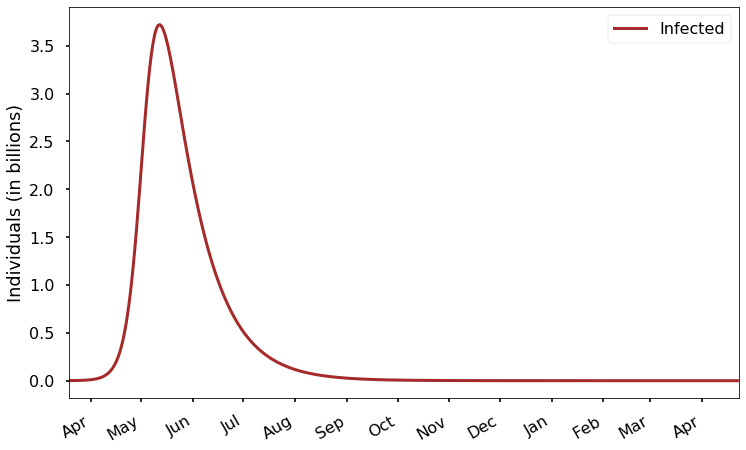“O thus be it ever when free men shall stand Between their lov’d home and the war’s desolation! Blest with vict’ry and peace may the heav’n rescued land Praise the power that hath made and preserv’d us a nation! Then conquer we must, when our cause it is just, And this be our motto -”In God is ou… Read more
As a follow up to this series of posts, I’ve created a version of the model that you can experiment with on your own, without needing to know any computer programming. Try it here. Note that it may take some time for the model to load. If you arrived here and haven’t already read the series of po… Read more

This is my fourth post on modeling the Coronavirus epidemic. I recommend starting with the first post and reading them in order. So far, we’ve learned about the SIR model and used available data combined with the model to predict the epidemic. We’re now going to detour into some additional mathem… Read more

Welcome to the third post in my series on modeling the Coronavirus pandemic. In the first and second posts, we introduced the SIR model and used the available data to estimate the model parameters, in the absence of any mitigation (i.e. with no social distancing, quarantine, etc.). In this post w… Read more
David I. Ketcheson
 I am a
Professor of
Applied
Mathematics and Computational Science at King Abdullah University of
Science and Technology (KAUST),
where I lead the Numerical
Mathematics Group.
I am a
Professor of
Applied
Mathematics and Computational Science at King Abdullah University of
Science and Technology (KAUST),
where I lead the Numerical
Mathematics Group.
My research involves analysis and development of numerical methods for integration of ordinary and partial differential equations, as well as the implementation of such methods in open source, accessible, high performance software and its application to understanding behavior of nonlinear waves in heterogeneous materials.